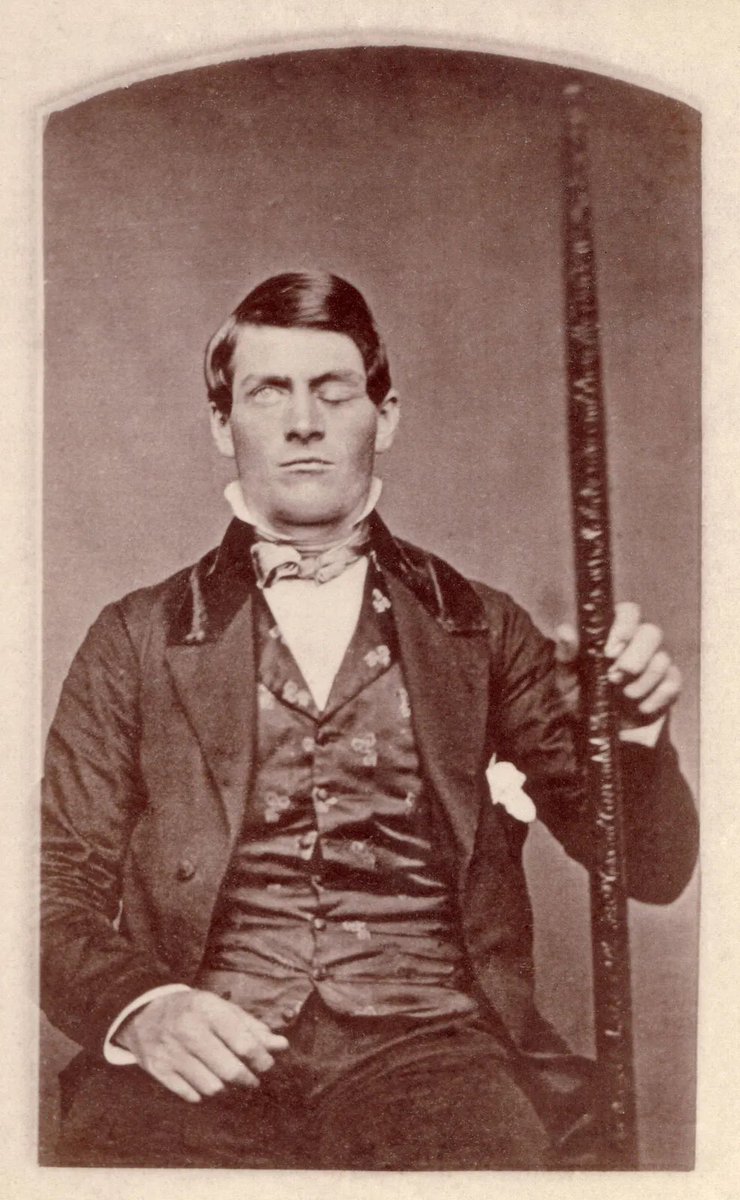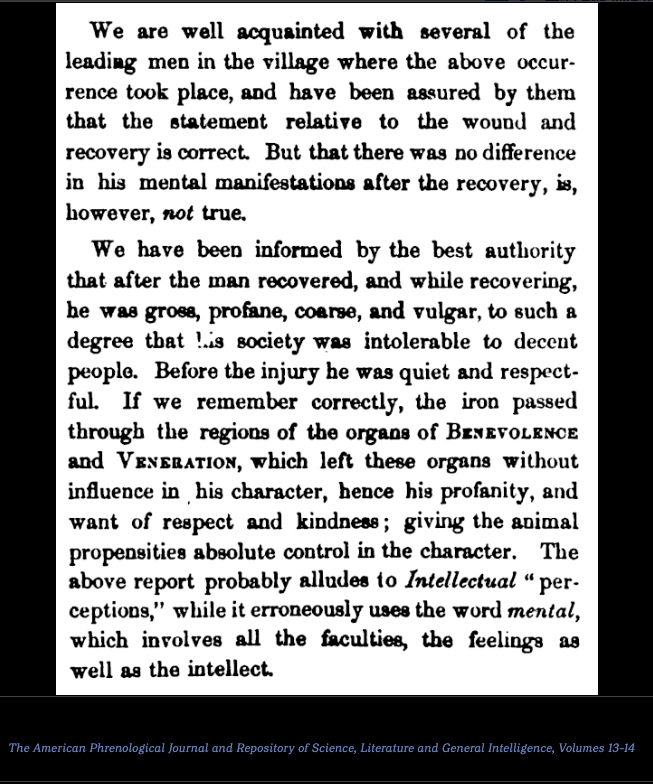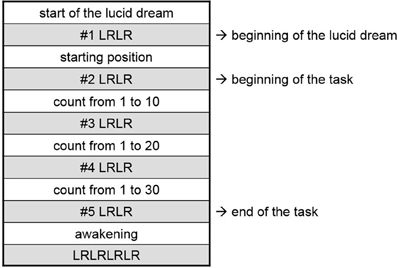CHILLING 🤯
1848: A 3-foot metal rod blasts through a man's skull.
A chunk of his brain matter spills onto the ground.
But he:
• stands up immediately
• walks a mile
• says "Doctor, just remove this rod so I can work"
What happened next, shocked the world:

1848: A 3-foot metal rod blasts through a man's skull.
A chunk of his brain matter spills onto the ground.
But he:
• stands up immediately
• walks a mile
• says "Doctor, just remove this rod so I can work"
What happened next, shocked the world:


Imagine this:
A three-foot iron rod blasts through your skull, slicing through your brain.
You survive.
But the person who wakes up isn’t *you* anymore.
This is the story of Phineas Gage, the accident that changed brain science forever.
A three-foot iron rod blasts through your skull, slicing through your brain.
You survive.
But the person who wakes up isn’t *you* anymore.
This is the story of Phineas Gage, the accident that changed brain science forever.
The year was 1848.
Phineas Gage, a 25-year-old railroad foreman, was preparing a blast to clear rocks.
One misstep—and an explosion sent a 1.1 m long, 6 mm in diameter, and 6 kg metal rod hurtling toward him.
It pierced his left cheek, traveled behind his eye, and exited through the top of his skull.

Phineas Gage, a 25-year-old railroad foreman, was preparing a blast to clear rocks.
One misstep—and an explosion sent a 1.1 m long, 6 mm in diameter, and 6 kg metal rod hurtling toward him.
It pierced his left cheek, traveled behind his eye, and exited through the top of his skull.


The rod destroyed a chunk of his brain’s frontal lobe.
People nearby froze.
They thought he was dead.
Amazingly, Phineas stood up, walked, and even spoke!
The injury seemed impossible to survive.
But what happened next shocked everyone.
People nearby froze.
They thought he was dead.
Amazingly, Phineas stood up, walked, and even spoke!
The injury seemed impossible to survive.
But what happened next shocked everyone.

Doctors couldn’t believe it.
Phineas Gage was *alive.*
Conscious.
But something was… different.
The man they once knew was gone.
And what had replaced him would change science forever.
Phineas Gage was *alive.*
Conscious.
But something was… different.
The man they once knew was gone.
And what had replaced him would change science forever.
Brain scientists have long studied Phineas Gage's case:
- 1849–1852: Early observations
- 1868: Psychological effects published
- 1940s: Stanley Cobb mapped skull injury path
- 1980s: CT scans updated findings
- 1990s: 3-D computer modeling introduced
- 2004: 3-D reconstruction analyzed injury extent
- 2012: Van Horn's team combined skull CT scans with typical brain MRIs
- 1849–1852: Early observations
- 1868: Psychological effects published
- 1940s: Stanley Cobb mapped skull injury path
- 1980s: CT scans updated findings
- 1990s: 3-D computer modeling introduced
- 2004: 3-D reconstruction analyzed injury extent
- 2012: Van Horn's team combined skull CT scans with typical brain MRIs
Before the accident, Gage was known for his hard work and charm.
He was reliable, kind, and respected.
Afterward?
He became unpredictable, profane, prone to fits of anger.
“He was no longer Gage,” his friends would say.
He was reliable, kind, and respected.
Afterward?
He became unpredictable, profane, prone to fits of anger.
“He was no longer Gage,” his friends would say.

What caused this dramatic change?
For centuries, science believed personality was unchangeable—a fixed essence.
Gage’s case flipped that belief on its head.
Research erupted around Gage’s condition.
For centuries, science believed personality was unchangeable—a fixed essence.
Gage’s case flipped that belief on its head.
Research erupted around Gage’s condition.
The damage was in his frontal lobe, an area we now know controls decision-making, emotions, and social behavior.
Gage’s case was the first proof that our brain regions govern our personality traits.

Gage’s case was the first proof that our brain regions govern our personality traits.


Harvard neuroscientists later confirmed this:
The frontal lobe is like the “CEO” of the brain.
It regulates judgment, impulse control, and complex thinking.
When Gage’s frontal lobe was damaged, it was like his internal “CEO” had quit.
@DrJoeDispenza says:
The frontal lobe is like the “CEO” of the brain.
It regulates judgment, impulse control, and complex thinking.
When Gage’s frontal lobe was damaged, it was like his internal “CEO” had quit.
@DrJoeDispenza says:
However, the most intriguing part of this case is:
Gage’s *memories* remained intact.
He could remember who he was, his friends, his life.
But the “how” and “why” of his choices—gone.
This split between memory and personality was unheard of.
Gage’s *memories* remained intact.
He could remember who he was, his friends, his life.
But the “how” and “why” of his choices—gone.
This split between memory and personality was unheard of.
Imagine knowing everything about yourself yet acting like a stranger.
That’s what happened to Phineas Gage.
The “you” in memory was still there, but the “you” in the present was… different.
Science had never seen anything like it.
That’s what happened to Phineas Gage.
The “you” in memory was still there, but the “you” in the present was… different.
Science had never seen anything like it.
In the following years, researchers rushed to study Gage's case.
A brain *location* was linked to behavior for the first time.
Gage’s story revealed that our brains weren’t just mush in our skulls—they had *regions*, each one responsible for different functions.
A brain *location* was linked to behavior for the first time.
Gage’s story revealed that our brains weren’t just mush in our skulls—they had *regions*, each one responsible for different functions.

Fast forward to today:
Modern studies show that brain injuries can create “new people” from familiar faces.
People with frontal lobe injuries can lose empathy, take excessive risks, or struggle to regulate emotions.
It’s like their inner compass has broken.
Modern studies show that brain injuries can create “new people” from familiar faces.
People with frontal lobe injuries can lose empathy, take excessive risks, or struggle to regulate emotions.
It’s like their inner compass has broken.

In fact, famous neuroscientist Antonio Damasio who studied cases like Gage's and found that *emotional regulation* is crucial for good decision-making.
Without it, people lose their moral compass, and their relationships suffer.
Gage’s story was just the beginning.
Without it, people lose their moral compass, and their relationships suffer.
Gage’s story was just the beginning.
Here's where it gets even more interesting…
Because of Gage, we now understand that trauma—even emotional—can change the brain.
Experiences leave physical imprints, shaping who we become.
Gage was proof that our brains are never static.
Memory expert @jimkwik says:
Because of Gage, we now understand that trauma—even emotional—can change the brain.
Experiences leave physical imprints, shaping who we become.
Gage was proof that our brains are never static.
Memory expert @jimkwik says:
The field of neuroplasticity was born from these ideas.
Scientists discovered the brain could *reorganize* itself—rewiring pathways based on experience.
Gage showed us that the mind is flexible, capable of adapting, healing, and evolving.
Scientists discovered the brain could *reorganize* itself—rewiring pathways based on experience.
Gage showed us that the mind is flexible, capable of adapting, healing, and evolving.
Phineas Gage’s legacy lives on in neurosurgery, mental health, and even personality studies.
We now know that the mind isn’t fixed.
With the right conditions, we can reshape it.
From trauma to triumph, his story paved the way for mental resilience research.
We now know that the mind isn’t fixed.
With the right conditions, we can reshape it.
From trauma to triumph, his story paved the way for mental resilience research.
Here's the key question:
Can one injury redefine our identity?
Are we our memories, our actions, or the wiring of our brains?
Gage's story reshapes science and challenges the concept of "self."
Neuroscientist Antonio Damasio studied cases like Gage's and found the answer.
Can one injury redefine our identity?
Are we our memories, our actions, or the wiring of our brains?
Gage's story reshapes science and challenges the concept of "self."
Neuroscientist Antonio Damasio studied cases like Gage's and found the answer.
Want to unlock the full power of your mind?
Learn how to transform your thoughts and habits with my free ebook, “From Stuck to Unstoppable.”
Begin your journey to mental mastery today.
darshakrana.kit.com/from-stuck-to-…
Learn how to transform your thoughts and habits with my free ebook, “From Stuck to Unstoppable.”
Begin your journey to mental mastery today.
darshakrana.kit.com/from-stuck-to-…
Repost if you gained anything from this thread.
Follow me @thedarshakrana for more
(P.S. I like Chocolate Chip Cookies 🍪)
Follow me @thedarshakrana for more
(P.S. I like Chocolate Chip Cookies 🍪)
https://twitter.com/1775589417543249920/status/1857906519058296965
• • •
Missing some Tweet in this thread? You can try to
force a refresh























